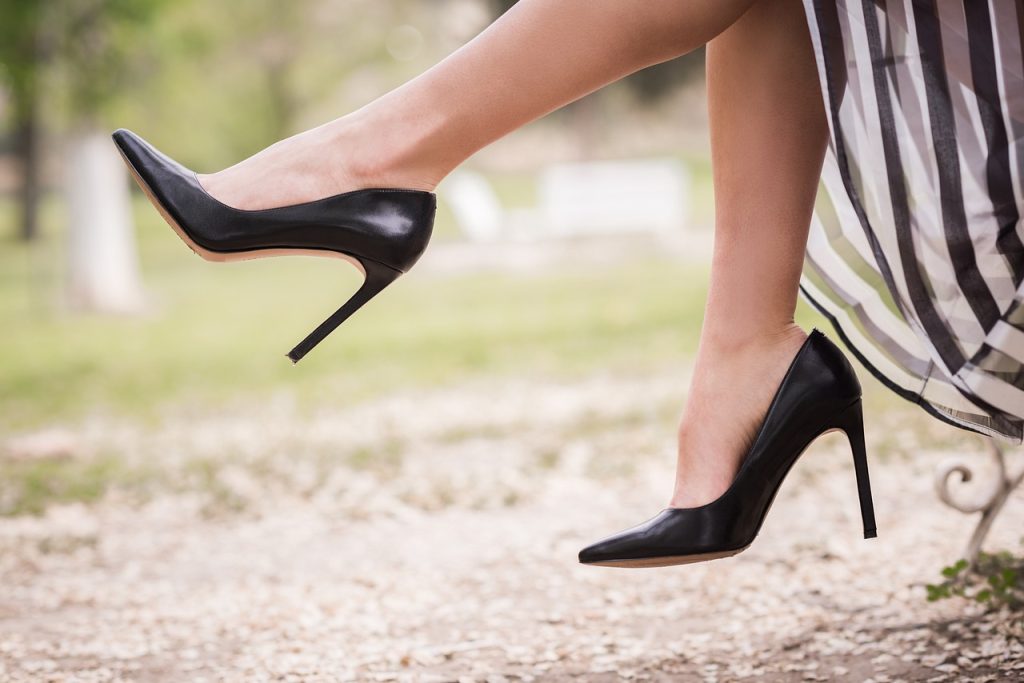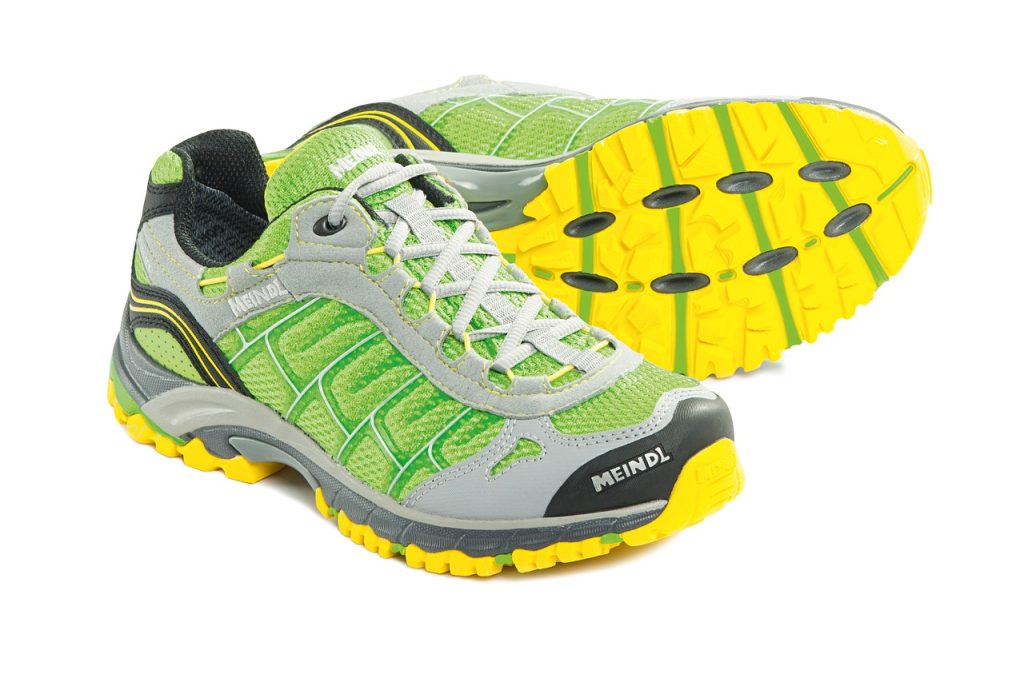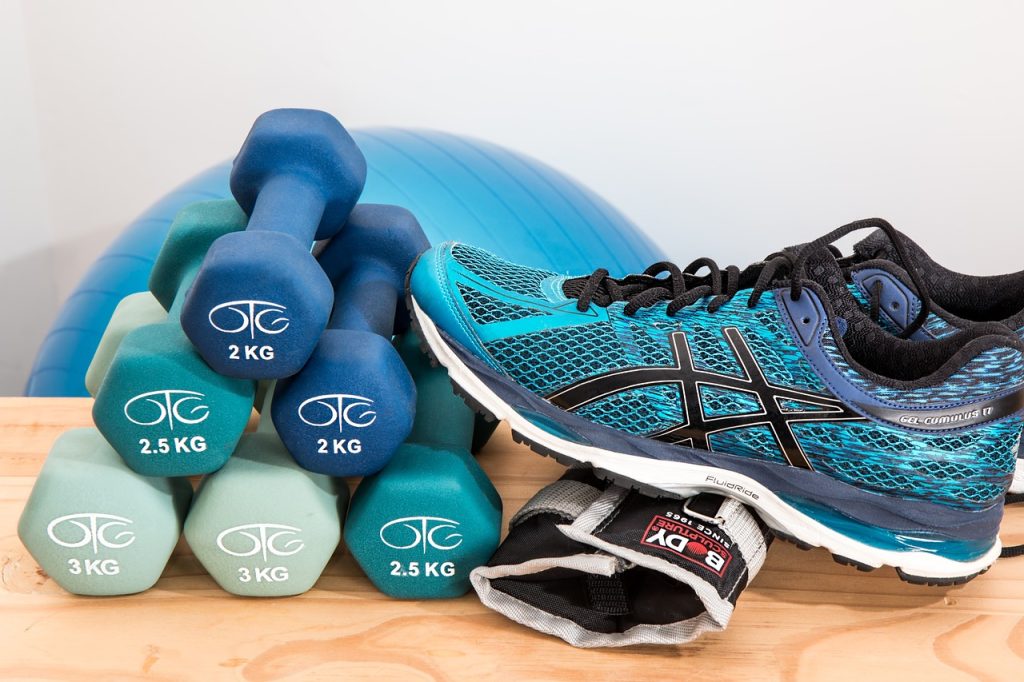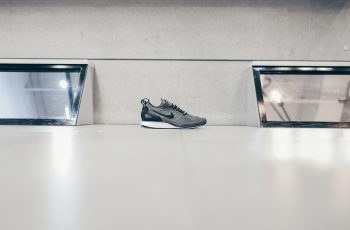If you’re a woman with special needs who loves to run, then this article is for you! Get ready to discover the amazing world of adaptive running shoes designed specifically to cater to your unique requirements. These innovative footwear options are changing the game by providing comfort, support, and functionality, ensuring that every woman can enjoy the thrill of running, regardless of their abilities. Whether you have physical disabilities, sensory challenges, or any other individual needs, these adaptive running shoes are here to empower you and make your running experience extraordinary. So lace up your shoes and get ready to embrace the joy of running like never before!

Importance of Adaptive Running Shoes
Adaptive running shoes play a vital role in enhancing both comfort and stability for women with special needs. Whether you face mobility challenges or have specific orthopedic conditions, these shoes offer the necessary support to ensure a safe and enjoyable running experience. In addition to providing adaptability, these shoes can also alleviate pain, improve coordination, and cater to individual foot width adjustments. Ultimately, their importance lies in enabling women with special needs to engage in physical activity comfortably and safely.
Improves comfort and stability
One of the key benefits of adaptive running shoes is the improvement in comfort and stability they offer. These shoes are designed to provide ample cushioning and support to prevent discomfort and minimize the risk of injury. The adjustable closures on these shoes allow for a customized fit, ensuring that you can find the perfect balance between snugness and flexibility. Whether you require extra support for your arches or need a wider toebox for better foot alignment, adaptive running shoes can be tailored to meet your specific comfort needs.
Eases mobility challenges
For women who face mobility challenges, adaptive running shoes can be a game-changer. These shoes are designed to accommodate various mobility aids, such as braces or orthotics, without compromising on comfort or functionality. The removable insoles in adaptive running shoes offer the flexibility to add specialized inserts or orthotics, allowing for a personalized fit and addressing any gait abnormalities or foot conditions. With the right pair of adaptive running shoes, you can navigate the challenges of mobility with ease, granting you the freedom to pursue your running goals.
Enhances safety during physical activity
Safety is paramount when engaging in any physical activity, and adaptive running shoes prioritize this aspect. With their non-slip outsole, these shoes provide excellent grip and traction, reducing the chances of slips and falls. They also offer adequate shock absorption to protect your joints from impact-related injuries. For women with conditions such as arthritis or joint pain, the supportive cushioning in adaptive running shoes can alleviate discomfort and allow for a safer running experience. By choosing adaptive running shoes, you’re investing in your safety and overall well-being while enjoying the benefits of an active lifestyle.
Key Features to Consider
When selecting adaptive running shoes, it’s important to consider the key features that contribute to their effectiveness and comfort. These features are specifically designed to address the needs of women with special requirements, and understanding their significance will help you make an informed decision.
Adjustable closures
One of the most crucial features of adaptive running shoes is their adjustable closures. Whether it’s Velcro straps, bungee cord lacing systems, or hook-and-loop fasteners, these closures allow for easy customization and a secure fit. They enable you to adapt the shoe’s fit to your individual needs, ensuring optimal comfort and support. The adjustability factor in these closures also accommodates any changes in foot swelling or orthotic requirements, making them ideal for women with conditions that affect foot size or shape.
Supportive cushioning
Supportive cushioning is another vital feature to consider when selecting adaptive running shoes. This cushioning provides shock absorption and minimizes the impact on your joints, preventing potential injuries. Look for shoes that offer ample cushioning in the midsole, heel, and forefoot areas to guarantee a comfortable and protective running experience. The level of cushioning required may vary depending on your specific needs, so it’s essential to assess your comfort preferences and find a shoe that meets those requirements.
Breathable materials
Breathable materials in adaptive running shoes ensure adequate airflow and ventilation, preventing excessive sweating and maintaining a comfortable environment for your feet. The upper mesh or fabric should be designed to wick away moisture, keeping your feet dry and reducing the risk of blisters or fungal infections. Proper ventilation not only enhances comfort but also contributes to the overall hygiene and health of your feet during and after physical activity.
Non-slip outsole
The outsole of adaptive running shoes must have a non-slip feature to provide reliable traction and grip, especially on different terrains or slippery surfaces. The presence of a high-quality rubber or synthetic material in the outsole ensures excellent traction and stability while minimizing the risk of slips or falls. Whether you’re running on paths or trails, the non-slip outsole of adaptive running shoes will provide the confidence you need to navigate any terrain safely.
Removable insoles
The inclusion of removable insoles in adaptive running shoes allows for versatility and customization. These insoles can be easily replaced with orthotic inserts or specialized cushioning to cater to your specific foot conditions or preferences. The ability to remove and replace insoles ensures that you can continually adjust your shoes based on changes in your foot needs, making adaptive running shoes an excellent long-term investment.
Specific Needs and Solutions
Different individuals have unique needs when it comes to adaptive running shoes. Here are some specific conditions and their corresponding solutions that you can consider when selecting the right pair of shoes:
Orthopedic conditions
If you have orthopedic conditions such as fallen arches, plantar fasciitis, or flat feet, adaptive running shoes can provide the necessary support and alignment. Look for shoes that offer a combination of arch support, stability features, and cushioning to alleviate pain and promote proper foot mechanics. Orthopedic shoe models often have additional features like reinforced heel cups, motion control technology, or medial posts to address specific orthopedic concerns.
Arthritis and joint pain
For women with arthritis or joint pain, adaptive running shoes with excellent shock absorption and cushioning are particularly important. These shoes can help reduce discomfort and minimize stress on the joints during physical activity. Look for shoes with ample cushioning in the midsole and heel areas, as well as those with supportive features like rocker soles or cushioned collars to provide extra relief for your arthritic joints.
Diabetic foot care
If you have diabetes, proper foot care is essential to prevent complications and ensure overall foot health. Adaptive running shoes that prioritize diabetic foot care often have features like seamless interiors, extra depth, and protective toe boxes. These features help minimize the risk of pressure points, rubbing, and ulcers. Look for shoes that are approved by the American Podiatric Medical Association (APMA) and consult with your healthcare provider for specific recommendations.
Balance and coordination difficulties
Balance and coordination difficulties can make it challenging to engage in physical activities such as running. Adaptive running shoes can assist in improving stability and minimizing the risk of falls. Look for shoes that offer a wide base and good ankle support to provide stability during movement. Additionally, features like midfoot support, lateral stability, and reinforced heels can contribute to better balance and coordination, enabling you to participate in running with greater confidence.
Foot width adjustments
Individuals with wider or narrower feet often struggle to find shoes that provide a proper fit. Adaptive running shoes offer solutions to address these concerns. Look for models that come in various width options or have adjustable closures to cater to your foot width. Shoes with stretchable materials or those that offer customization through separate sizing for the width can ensure that the shoes fit comfortably without causing any pressure or discomfort.
Brands and Models to Explore
When it comes to adaptive running shoes, several brands and models are known for their quality and suitability for women with special needs. While personal preferences may differ, exploring these brands and models can provide a starting point in your search for the perfect pair of adaptive running shoes:
Nike FlyEase
Nike FlyEase is a line of footwear designed to prioritize accessibility and ease of use. With innovative closure systems, such as wrap-around zippers or magnetic fasteners, these shoes make it effortless to put them on and take them off. They offer a variety of styles, including running shoes, that cater to different needs while ensuring optimal comfort and functionality.
New Balance 990v5
New Balance is renowned for producing sneakers with exceptional quality and comfort. The New Balance 990v5 is a popular choice among runners with special needs, offering superior cushioning and support. This model is known for its stability features, durability, and availability in various widths, making it a suitable option for women with unique foot measurements or conditions.
Saucony Peregrine ISO
Saucony Peregrine ISO is a versatile trail running shoe that provides excellent grip, cushioning, and protection. Its POWER TRAC outsole ensures reliable traction on different terrains, while the EVERUN topsole provides responsive cushioning. This shoe’s combination of stability, comfort, and durability make it a great choice for women seeking adaptive running shoes for outdoor activities.
Brooks Adrenaline GTS
Brooks Adrenaline GTS is a popular running shoe known for its comfort and stability. It offers a balanced mix of cushioning and support, making it suitable for those with pronation issues or a need for enhanced stability. The combination of BioMoGo DNA cushioning and GuideRails technology ensures a secure and comfortable running experience.
ASICS Gel-Kayano
ASICS Gel-Kayano is a well-regarded running shoe that prioritizes cushioning and support. This model features ASICS’ signature Gel technology in the forefoot and heel, delivering excellent shock absorption and comfort. The Gel-Kayano is known for providing stability and support for various foot types and conditions, making it a popular choice among runners with special needs.

Consulting with Healthcare Professionals
When considering adaptive running shoes, it’s crucial to seek advice from healthcare professionals who specialize in foot and orthotic care. They can provide valuable guidance based on your specific needs and circumstances. Here is why consulting with healthcare professionals is important:
Importance of professional advice
Healthcare professionals, such as orthotists or podiatrists, possess specialized knowledge and expertise in foot-related conditions and their associated biomechanical issues. Their expertise allows them to assess your individual needs accurately and recommend the most suitable adaptive running shoe options. By consulting with these professionals, you can ensure that you make an educated decision and select running shoes that will provide the best support and comfort for your unique requirements.
Recommendations based on individual needs
Each person’s needs differ, and what works for one may not work for another. Healthcare professionals take into account your medical history, foot structure, and specific condition when making recommendations. They can provide insights into the types of adaptive running shoes that would serve you best, ensuring that you receive personalized advice tailored to your individual requirements. This personalized approach creates a greater likelihood of finding shoes that address your specific concerns and enhance your running experience.
Orthotist or podiatrist consultations
Orthotists and podiatrists are professionals who specialize in the assessment, design, and fitting of orthotic devices and shoes. Visiting an orthotist or podiatrist allows for a comprehensive evaluation of your foot function, gait, and specific requirements. They can take precise measurements, analyze your walking or running patterns, and provide expert advice on adaptive running shoes that cater to your needs. Their input is invaluable in ensuring that you find the right shoes to maximize comfort, stability, and overall foot health.
Fitting and Sizing Tips
Proper fitting and sizing are essential for comfort, support, and optimal shoe performance. Consider the following tips when selecting adaptive running shoes to ensure the best fit:
Proper measurement techniques
Getting an accurate measurement of your foot size is crucial for finding the right fit. Use a Brannock device, a specialized shoe fitting tool, to measure the length, width, and arch length of your foot. This measurement will serve as the baseline for determining your shoe size and width requirements. Remember to measure both feet, as they may differ slightly in size, and always defer to the larger foot when selecting shoe sizes.
Considering foot shape and volume
Understanding your foot shape and volume is important in selecting adaptive running shoes that align with your needs. Some brands or models are better suited for narrow or wide feet, while others offer versatile options that accommodate various foot shapes. Additionally, consider the volume of your foot, including factors like arch height, instep depth, and overall foot thickness. A shoe with the appropriate shape and volume will ensure a more comfortable and secure fit.
Trying different shoe styles
Different shoe styles offer varying levels of support, cushioning, and stability. It’s important to try on different shoe styles to determine which one best suits your foot and running needs. For example, a stability shoe may provide better support for overpronators, while a neutral shoe may be more suitable for those with a neutral gait. Trying on multiple styles will allow you to gauge which shoe style feels most comfortable and supportive during your runs or walks.
Testing for appropriate width and length
Ensuring the appropriate width and length is crucial for a proper fit. When trying on adaptive running shoes, make sure there is enough space in the toe box for your toes to wiggle comfortably. Additionally, the shoe should not feel too tight or too loose around the midfoot and heel areas. Try walking or running in the shoes to assess their overall comfort, stability, and flexibility. If possible, visit a specialty running store where trained staff can guide you through the fitting process and provide expert advice.

Online Resources and Supportive Communities
The internet offers a wealth of resources and connections to supportive communities that can assist you in your search for adaptive running shoes. Here are some online platforms and communities that provide valuable information and support:
Specialized websites and blogs
Specialized websites and blogs cater to individuals with special needs and offer detailed information about adaptive running shoes. These platforms often provide comprehensive reviews, product comparisons, and specific insights into the shoe features that address various conditions. They can be a valuable resource for understanding the latest advancements in adaptive footwear and finding recommendations tailored to your needs.
Online forums for individuals with special needs
Online forums are a treasure trove of advice and experiences from individuals who face similar challenges. These forums allow you to connect with others who share your concerns and can offer valuable insights based on their own experiences with adaptive running shoes. You can ask questions, seek recommendations, or simply find solace in knowing that you’re not alone in your journey towards finding the perfect pair of adaptive running shoes.
Social media groups for sharing experiences
Social media platforms, such as Facebook groups or Instagram communities, bring together individuals with special needs who have an interest in running or athletic activities. These groups often share experiences, tips, and recommendations for adaptive running shoes. Engaging with these communities not only provides you with reliable information but also allows you to connect with like-minded individuals who may be pursuing similar goals or facing similar challenges.
Adaptive Running Shoe Accessories
In addition to the adaptive running shoes themselves, there are various accessories available that can further enhance your running experience. These accessories are designed to address specific needs and provide additional support, comfort, and protection. Consider the following accessories for a comprehensive running solution:
Heel cups and inserts for arch support
Heel cups and arch support inserts can help alleviate discomfort and promote proper foot alignment during running. These accessories provide targeted support to areas that may require extra cushioning or stability. They can be particularly beneficial for conditions such as plantar fasciitis or fallen arches. When combined with adaptive running shoes, these accessories offer an enhanced level of support tailored to your specific needs.
Antimicrobial socks for foot hygiene
Maintaining foot hygiene is essential, especially during physical activity. Antimicrobial socks are designed to combat bacteria and prevent unpleasant odors. These socks have moisture-wicking properties, helping keep your feet dry and reducing the risk of blisters. Investing in good-quality antimicrobial socks is an excellent way to promote foot health and hygiene while engaging in running or other athletic activities.
Gait analysis tools for biomechanical assessment
Gait analysis tools, such as pressure sensors or video analysis software, can provide valuable insights into your running mechanics. These tools assess factors like foot strike pattern, pronation, and overall gait dynamics. By analyzing your running form, professionals can make recommendations for adaptive running shoes or modifications that will optimize your performance, prevent injuries, and enhance your overall running experience.
Silicone gel pads for pressure relief
Silicone gel pads offer targeted cushioning and pressure relief for specific areas of the foot, such as the forefoot or heel. These pads can help alleviate pain or discomfort caused by conditions like metatarsalgia or heel spurs. Placing these pads strategically in your adaptive running shoes can provide additional support and help distribute pressure more evenly, ensuring a more comfortable and pain-free running experience.
Maintenance and Longevity
To ensure the longevity and optimal performance of your adaptive running shoes, it’s essential to follow proper maintenance practices. Implementing the following tips will help you get the most out of your shoes:
Proper cleaning and drying techniques
Regularly clean your adaptive running shoes to prevent dirt, sweat, and bacteria build-up. Each shoe has specific cleaning guidelines, so follow the manufacturer’s instructions to ensure proper cleaning. Use mild soap or specialized shoe cleaners and allow your shoes to air dry naturally. Avoid exposing the shoes to extreme heat or direct sunlight, as it can damage the materials or affect their performance.
Inspection for wear and tear
Regularly inspect your adaptive running shoes for signs of wear and tear. Look for any fraying, cracks, or separation of the shoe components. Pay attention to the outsole, midsole, and upper, as these areas experience the most stress during running. If you notice any significant damage or signs of degradation, consider replacing your shoes to maintain safety, support, and durability.
Replacing worn-out components
Certain components of adaptive running shoes, such as insoles or laces, may wear out more quickly than others. It’s important to replace these components as needed to ensure optimal performance and comfort. As a general guideline, consider replacing insoles every six months or as recommended by the manufacturer. Replace laces if they become frayed or lose their elasticity. By addressing worn-out components promptly, you can maintain the functionality and longevity of your adaptive running shoes.
Storage tips for preserving shoe quality
Proper storage is important to preserve the quality and integrity of your adaptive running shoes. Store your shoes in a cool, dry place away from direct sunlight or extreme temperatures. Avoid crumpling or compressing the shoes, as this can affect their shape and structure over time. Consider using shoe trees or stuffing the shoes with newspaper to maintain their original form. By implementing proper storage techniques, you can extend the lifespan of your adaptive running shoes, ensuring they continue to provide the support and performance you need.
Investing in Personal Well-being
When considering adaptive running shoes, it’s important to prioritize personal well-being above all else. While factors like budget and aesthetics may play a role in your decision-making process, they should not override the importance of shoe quality and comfort. Here are some key considerations when investing in your personal well-being:
Considering budget and affordability
Adaptive running shoes can range in price depending on various factors, such as brand, features, and materials. It’s important to set a realistic budget and consider what you can comfortably afford. While it may be tempting to opt for cheaper alternatives, investing in high-quality adaptive running shoes can significantly impact your comfort, safety, and overall running experience. Strike a balance between affordability and value to ensure you make a worthwhile investment.
Prioritizing shoe quality over aesthetics
While aesthetics can be a consideration when choosing adaptive running shoes, it’s crucial to prioritize quality and functionality. Ensure that the shoes meet your specific needs and provide the necessary support and comfort for your running activities. Remember, the primary purpose of adaptive running shoes is to enhance your well-being, so focus on finding shoes that tick all the boxes in terms of features, support, and fit before considering aesthetics.
Valuing personal comfort and health benefits
Ultimately, your personal comfort and health benefits should be prioritized when selecting adaptive running shoes. Each individual has unique requirements, so make choices that align with your specific needs and conditions. Consider the impact of proper shoe selection on your overall well-being, such as pain reduction, improved mobility, and enhanced safety during physical activity. By valuing your personal comfort and health benefits, you’re making an investment that contributes to your long-term well-being.
In conclusion, adaptive running shoes are a crucial asset for women with special needs. These shoes improve comfort and stability, ease mobility challenges, and enhance safety during physical activities. When selecting adaptive running shoes, consider key features such as adjustable closures, supportive cushioning, breathable materials, non-slip outsoles, and removable insoles. Address specific needs through solutions catered to orthopedic conditions, arthritis and joint pain, diabetic foot care, balance and coordination difficulties, and foot width adjustments. Explore reputable brands and models like Nike FlyEase, New Balance 990v5, Saucony Peregrine ISO, Brooks Adrenaline GTS, and ASICS Gel-Kayano. Consult with healthcare professionals, focus on proper fitting and sizing techniques, and utilize online resources and supportive communities. Consider adaptive running shoe accessories like heel cups, antimicrobial socks, gait analysis tools, and silicone gel pads. Follow maintenance and longevity tips, and importantly, invest in your personal well-being by prioritizing comfort, health benefits, and quality over aesthetics. With the right pair of adaptive running shoes, you can embrace physical activity with confidence, knowing that your needs are properly supported.


